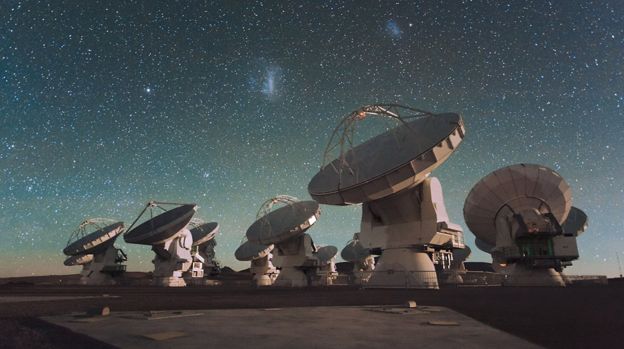25.09.2020

When scientists presented the first ever picture of a black hole last year, it was hailed as an extraordinary breakthrough.
Well, now they've reassessed some of the image data that was acquired in the years running up to that historic snapshot.
And it gives us some fresh perspectives on the object known as M87*, which has the monster mass of 6.5 billion Suns.
One insight is recognising the black hole's brightness flickers over time.
This is probably the result of M87* shredding and consuming nearby matter caught in the ferocious pull of its gravity.
The matter, heated to billions of degrees, twists and turns through what are intense magnetic fields. And as it does so, the region of brightness seen in the black hole's encircling ring of gas appears to wobble.
"What we see is the flow of matter swirling around and ultimately plunging over the event horizon, but this matter, this flow of plasma, of gas, is very turbulent," explains Dr Maciek Wielgus, an astronomer at Harvard University, US.
"We expect this turbulence. There's what's called a magneto-rotational instability rolling over this turbulence. And for that reason, there is some stochasticity (randomness in the behaviour); it appears that blobs of brightness form at different locations," he told BBC News.
The historic image of M87*, released in April 2019, was captured by the Event Horizon Telescope (EHT).

This is a "virtual observatory". It links a series of eight radio receivers - from the South Pole, to Hawaii, to the Americas and Europe - to mimic the resolution you'd get with a single telescope the size of the Earth.
Astronomers describe the attained resolution as 42 microarcseconds. To the lay person, this is a sharpness of vision that's the equivalent of "being able to watch a game of billiards, or snooker, on the Moon, of being able to follow the movement of the balls", said Dr Wielgus.
And it's what you need if you want a detailed view of an object - even one as big as M87* - that's 53 million light-years (roughly 500 million trillion km) away.
What we saw last year splashed across newspapers, websites and TV screens was a bagel-shaped feature - the accretion disc, which is a ring of superheated, excited gas turning around a dark central region where the black hole is expected to reside.
The picture emerged from a single week's worth of joint observations by the linked EHT array - followed by a lengthy period of computer processing and analysis.
But, of course, to get to that moment, there had been many years of preparation, of trial and error, and with fewer radio receivers than in the final EHT configuration.
And it's the data from all the practice runs, going back to 2009, that Dr Wielgus and colleagues have now revisited and described in a paper published in The Astrophysical Journal.
What is a black hole?
- A black hole is a region of space where matter has collapsed in on itself
- The gravitational pull is so strong that nothing, not even light, can escape
- Black holes will emerge from the explosive demise of certain large stars
- But some are truly gargantuan and are billions of times the mass of our Sun
- How these monsters - found at galaxy centres - formed is unknown
- Black holes are detected from the way they influence their surroundings

What they've done essentially is re-assess that archive material based on everything they learned in producing the final 2019 image.
They can't present us with whole images from the old data, but using models they can pull out details to confirm certain characteristics and behaviours in M87* that ought to have been present during those earlier years.
"None of the older data periods were as good as the one [for the 2019 image]," said Prof Anton Zensus, director of the Max Planck Institute for Radio Astronomy, Germany, and founding chairman of the EHT.
"But all of them can be looked at, knowing that there is an underlying ring structure there. And so if you have restrained the starting conditions for looking at these data, then that ring structure actually is apparent in all of these sessions going back to 2009. So the significance of this is that we confirmed the [2019] result by looking at the older data."
 Image copyrightESO
Image copyrightESO
Recognising a shifting position of brightness in the accretion disc of M87* is one outcome of the research.
Another is simply the confirmation of the constancy of the diameter of this ring structure and hence the diameter of the black hole itself - or more properly its event horizon: the zone inside which the velocity needed to escape the pull of gravity exceeds even the speed of light.
For M87*, this "surface" is about 40 billion km across. Think of a region of space about twice the size of our Solar System.
Something else this research does is give us a glimpse of the EHT's future capability.
It follows logically that if you run many years of data together, it should be possible to make movies of the activity in the vicinity of black holes.
But this will require more radio receivers being incorporated into the EHT array, and for the observation periods to be extended.
At the moment, the EHT only works for a few days each year in late March, early April, because this is the time of year when the observing weather conditions are typically good at all the different radio stations around the globe.
Quelle: BBC
